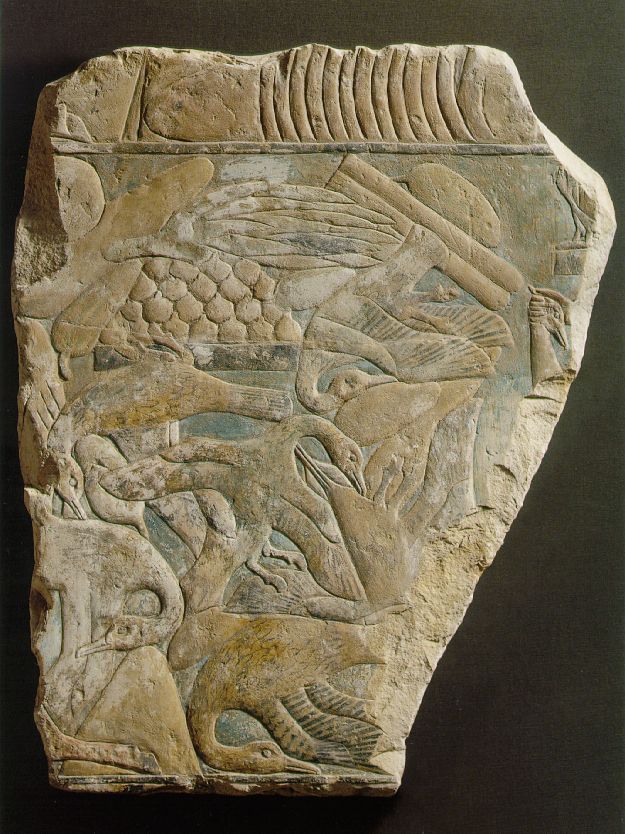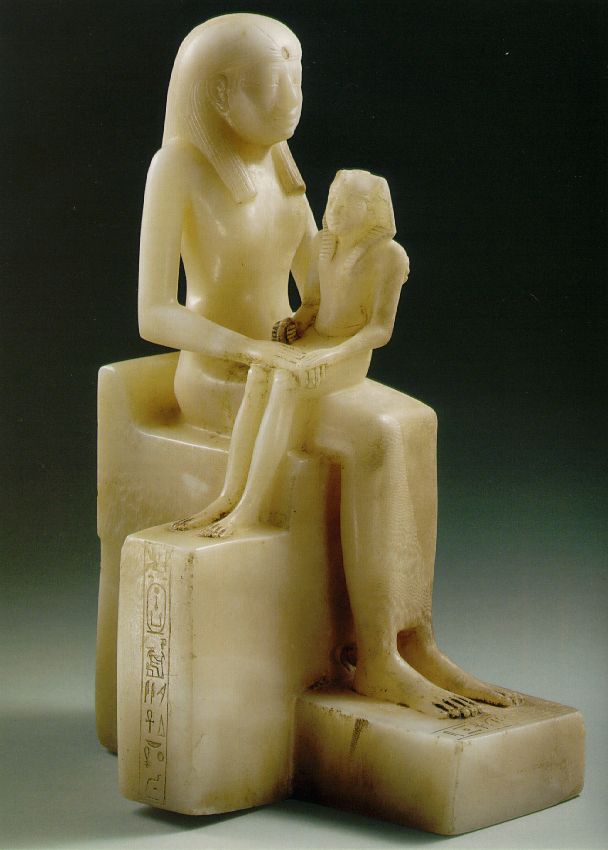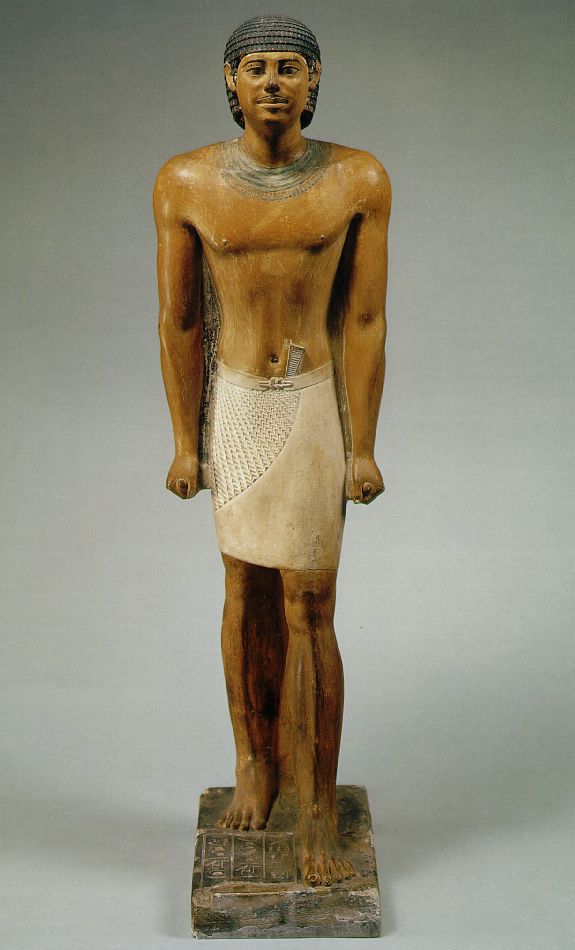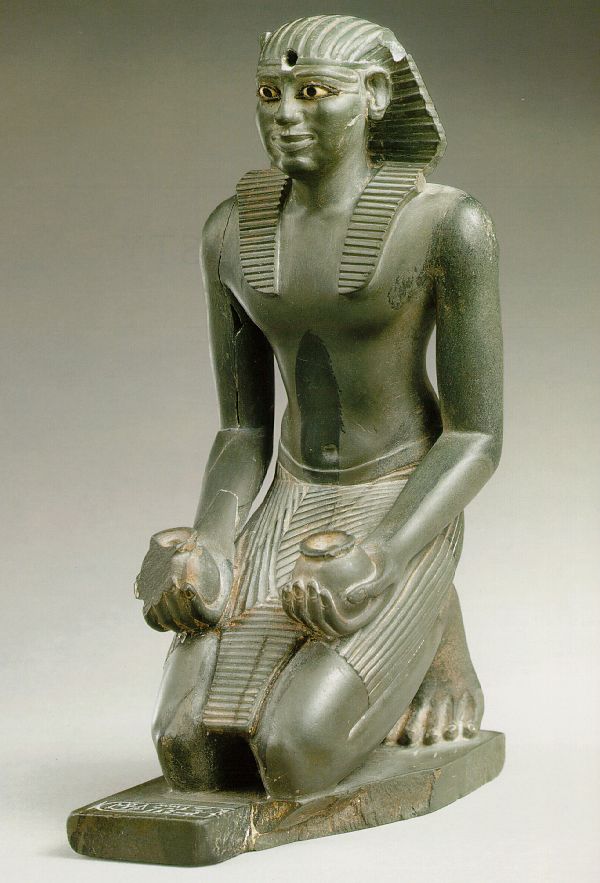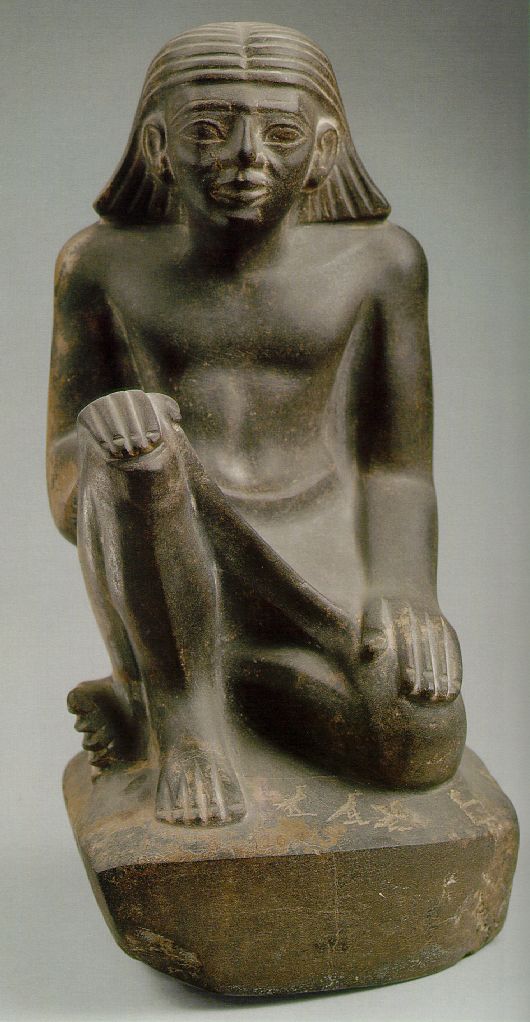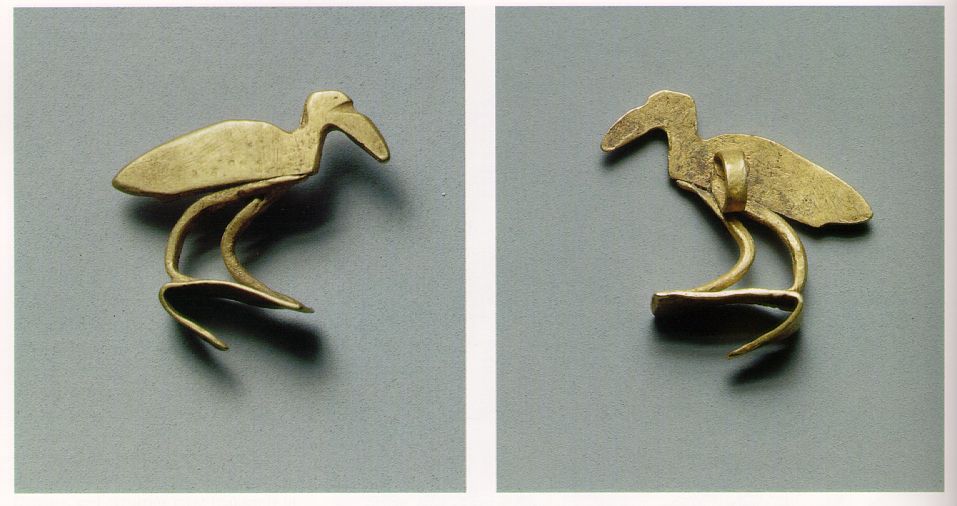|
Egyptian Art 2700 BC-200 AD |
For the Egyptians believed that the body must be preserved if the soul is to live on in the beyond. That is why they prevented the corpse from decaying by an elaborate method of embalming it, and binding it up with strips of cloth. It was for the mummy of the king that the pyramid had been piled up, and his body was laid right in the centre of the huge mountain of stone in a stone coffin. Everywhere round the burial chamber, spells and incantations were written to help him on his journey to the other world.
|
Still life: offerings for the deceased Early Sixth Dynasty Painted limestone Height: 48 cm (18 7/8 in) Width: 38.5 cm (15 1/8 in) The Detroit Institute of Arts
Pair statue of Queen Ankh-nes-meryre II and her son Pepi II seated
Atjema standing
Headrest inscribed with the name of
Pepi II
Pepi I kneeling
Prince Tjau seated on the ground
Amulet in the shape of an ibis
|
